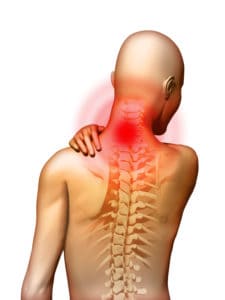So, how does Myofascial Release Therapy shape up when compared to Physical Therapy?
Good question. We’re pleased you asked because many patients confuse these two types of therapy. Both aim to reduce pain, improve mobility, and increase well-being. But that’s where their similarities end – and they achieve their pain-killing and mobility-boosting goal in different ways.
Think of it this way; when a cog in a machine gets stuck and stops working, physical therapy unjams it and gets it moving again. In contrast, myofascial release therapy does the same job with the hypothetical equivalent of WD-40 to lubricate and protect the cog from getting stuck again in the future.
Myofascial Release Therapy also addresses the things – such as misalignment in the machine itself – that led to the cog getting stuck in the first place. We fix the situation that caused the cog to jam. So, instead of having to condemn the machine (i.e., you) – it keeps working well for many years to come.
But which one is right for you?
Is one better than the other?
And can they work in tandem?
In this blog, we answer your questions about physical therapy versus myofascial release therapy, explaining how they differ, and the individual and multi-prong benefits. We also help you decipher which one is best for your situation.
We’re myofascial release therapy specialists, of course, but our ultimate goal is that you are able to find a pain-free future. We understand what it’s like stuck in pain. It’s debilitating. It can devastate your relationships, work, and social life, and it is undeniably depression-inducing. So, if, for you, physical therapy might serve you better: we tell you. We don’t unethically try and convince you that myofascial release therapy is the only way.
Both have their place in drug-free pain management and optimal wellness.
What is Physical Therapy?

Physical therapy works within a somewhat one-dimensional field that seeks to find the offending joint/muscle and treat it in isolation – without consideration for the body/human as a whole. It can be incredibly beneficial – to mobilize joints and strengthen the surrounding muscles after surgery or injury. Still, it’s not the whole picture, and more often than not, it’s not the entire solution either.
Physical Therapists tend to ask you where it hurts. That exact spot and immediate vicinity become the focus of treatment. They pinpoint a specific muscle or joint or branch of nerves, which patients delight in initially. Because they feel like they have a “diagnosis” – such as a rotator cuff strain or frozen shoulder – this specificness makes successful treatment and resolution feel possible.
They leave physical therapy feeling OK.
Pain is better than it was.
Mobility is good, but not great.
Flexibility isn’t what it was, but that’s probably age – pain and stiffness are a natural part of getting older – especially after surgery or injury, right?
So, they accept “just OK” as their depressing new normal.
Many patients come to us in desperation after physical therapy fails to resolve their problem. They spent 60 dollars on a session and came away with a printed sheet of paper and a generic set of exercises that they could have found on the internet – or followed along to on YouTube.
That might be doing some Physical Therapists a disservice. There are good ones and bad ones, as with everything. But in the case of chronic pain – that, in some cases, has gone on for decades, no matter how dedicated you are, these types of exercise aren’t going to cut it nor free up fascial restrictions independently.

Where we would recommend physical therapy is when you need to activate muscles or learn to walk again. Where you need a hands-on physical therapist to walk you through the strengthening and muscle-activating exercises that get you back up and running, Physical Therapy is invaluable.
However, if you’ve had a hip or knee replacement, you will benefit from treatment with a Myofascial Therapist. We help people recover far faster than physical therapy alone.
If you’re a runner or a professional athlete, too, who needs their gait or form analyzed to make speed or strength, or efficiency improvements, then a physical therapist will be able to help.
If your pain is complex, or it’s gone on for an extended period – long after old injuries have healed, then you may prefer Myofascial Release Therapy. This type of therapy digs deeper – asking why and taking nothing at face value.
Chronic pain and the associated lack of mobility are debilitating – not just physically, but mentally too.
The US Pain Foundation reports that:
“Chronic pain has biopsychosocial implications. It is associated with Reduced Quality of Life, including increased risk of anxiety and depression.”
When you’re depressed, the pain feels worse. The chronic discomfort triggers your fight-or-flight system – releasing stress hormones into your bloodstream. Your muscles tense. Stressed-out shoulders follow your nervous system’s direction until it becomes a vicious circle, with rock-solid and unshift-able myofascial tissue at the center.
You can’t lower your shoulders, even if you wanted to.
Nor stop your body from pumping cortisol and adrenalin into your bloodstream.
Brain fog stalks your workday like an impatient big cat.
Your mental and physical performance plummets.
Relaxation is impossible.
Insomnia haunts you from sunset to sunrise.
Irritability with work colleagues, your children, and your partner is at an all-time high – and your patience checked out months ago.
It’s no fun. That’s why we can’t ignore the psychological and cognitive effects of chronic pain.
By their admission, physical therapists don’t work with the mind part of the mind-body connection. And in doing so, they mostly miss the stress-connection component of many common pain conditions.
How Myofascial Release Therapy is Different

Our myofascial tissue is the “stuff” that encases, protects, and connects everything inside our bodies. There’s a superficial layer – which, in simple terms, keeps your skin on and connects it to the muscles and bones below. Deep fascia is denser – with more sheets/layers. This fibrous tissue extends deeper into our bodies to encase and protect our muscles.
Myofascial Release Therapy works on this mysterious (and potentially magical when it’s released) tissue surrounding everything in our bodies. It’s more a case of it being forgotten and overlooked when it comes to chronic pain, in any case. It’s not a mystery to us. But to physical therapists and MDs: it’s glossed over.
Sometimes referred to as connective tissue, fascia has always been there. But traditionally, publishers cut it away in anatomy and physiology books. Standard western medicine’s understanding of pain patterns excluded it too. The medical and scientific communities have long favored theories that focus on individual joints, bones, organs, muscles, and the nervous system acting in isolation.
What a crazy idea. When you think about it, to believe that everything operates in isolation. That broken bones stitched together with metal poles don’t change the surrounding tissue. That significant impacts and major traumas don’t leave a mark – more profound than the superficial scar. We think so anyway.

Injured your bicep at the gym?
It may not be your bicep muscle; it could be a problem with the deep fascia surrounding the muscle overreacting to inflammation.
Sore ankle?
It might not be arthritis; it could be a trigger point in your shoulder from the chronic stress you experienced last year.
The human body adapts, of course. We can survive with only one kidney. You can survive, too, and continue to eat well without a gallbladder. Amazingly, your liver reroutes and, instead, drips bile straight into your digestive system, so you can still digest that pastrami burger and ice cream shake.
Clever, right?
But what about the scar tissue left behind after surgery? The effect of other organs moving into space the gallbladder left behind and all the associated stretching, twisting, and injury of your highly sensitive connective tissue fibers (or fascia). Bizarrely, you may think, this compensation may be the cause of your low back pain. Seriously. That’s why – with myofascial release therapy – taking your full history is one of the essential parts of treatment.
In this situation, physical therapists would overlook the root cause of pain.
The same is true for broken bones; Modern medicine can fix broken bones with casts, pins, and metal poles. The break or fracture in the bone heals. We’ve got so good at fixing these things that broken bones are viewed as minor injuries aside from neck and spinal fractures. But less consideration (i.e., none) is given to how the body adapts.
For your body, a broken bone is a big deal. It’s a trauma and it reacts accordingly. The digestive system, too, you may have an IBS diagnosis because standard western medicine couldn’t find a cause for your digestive symptoms. You pop probiotics, drink kombucha and try to eat more fiber. But the stomach pain and spasms remain. You’ve had ultrasound scans and a colonoscopy that showed nothing. Doctors are baffled. But that car accident you had 15 years ago has caused the fascia in your left-hand side to stiffen and tighten and stop your colon from functioning effectively.
This different approach and alternative philosophy are where Myofascial Release Therapy comes into its own. With a different perspective on the root cause of pain and dysfunction than the reductionist approach of standard physical therapy.
Is Myofascial Release Therapy Right For Me?

Does it sound like it might be helpful for you?
We offer a free telephone consultation or 30-minute discovery visit to all new patients where you talk to a trained myofascial release therapist to determine whether this treatment is right for your situation.
Please contact us to book your appointment.

